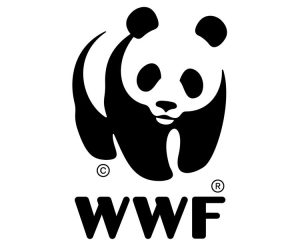Welcome to October month. “Here’s what’s been happening—and what’s ahead—in our world of conservation.”
In this issue
- Wildlife Monitoring 16 October @17h30
- Walking with Fireflies
- AGM held on Thursday 18 September.
- Summary of Talk on Hermanus water by
Dylan Blake of Umvoto. - Mill Stream cleanup with Die Bron Primary.
- Spring Day at the Paddavlei.
- Schools visit the HBS Flower Festival.
Wildlife Monitoring & Ecosystem Conservation in the Overberg
The Overberg is one of South Africa’s most biodiverse regions, stretching from the farmlands of Caledon to the rugged coast of Walker Bay. Its mountains, estuaries, and coastline provide habitat for countless species — from fynbos plants to leopards, waterbirds, and southern right whales. Protecting this natural wealth depends on more than passion: it requires ongoing wildlife monitoring.
Our speaker on 16 October will be Mike Fabricius, the Reserve Manager of Grootbos Private Nature Reserve and Chairperson of Conservation at Work. He has been working in the field of tourism and conservation for 15 years. He has a degree in Zoology from Rhodes, and a B.Tech in Nature Conservation from NMU Saasveld.
Mike’s passion for nature can be seen through his camera trapping work, using wildlife monitoring as a tool for creating awareness about the conservation needs of the most secretive and vulnerable creatures of the Overberg, the Leopards of the Cape. Together with a dedicated team of the Grootbos Foundation Conservation and Research Unit, they conduct various projects across thelandscape aimed at protecting our fragile ecosystems of the Overberg.
Walking with Fireflies
We are hoping to see fireflies again this October. We don’t know when, but contact Anina on WhatsApp 083 242 3295, and we will let you know. Numbers are limited.
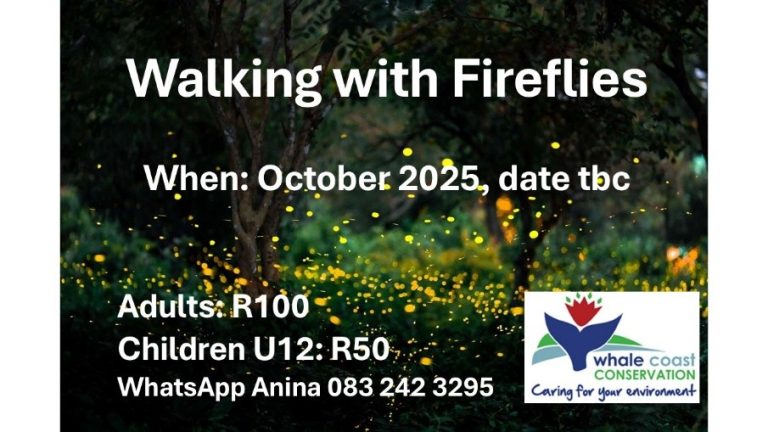
Report on Annual General Meeting
Our AGM was held on Thursday 18 September at the GreenHouse.
Chair’s Report 2025: Dr Pat Miller
As another year closes, Whale Coast Conservation (WCC) reflects on both achievements and challenges in a rapidly changing world. Global upheavals, technological disruption, and short sighted political priorities continue to place strain on natural systems. Locally, climate change impacts are increasingly visible, compounded by bureaucratic delays that slow effective action. The deteriorating condition of the Onrus River peatland is a stark reminder of these realities.
Two pressing issues highlighted this year illustrate the problem:
Fernkloof Stream: Overstrand Municipality diverted the stream from its natural course in the reserve more than a year ago, cutting water flow to the lower reserve. This contravened national environmental and water legislation. Despite official instructions to restore the flow, two rainy seasons have passed with no action.
Baboon Management: After the termination of a service provider contract, several baboons were left with heavy, non-functioning tracking collars. Despite assurances from authorities, these have not yet been removed. Such cases underscore the frustration of civil society organisations willing to take action but hindered by government inaction. Despite these challenges, WCC continues to pursue its mission through three core programmes:
EcoWatch: Monitoring development applications and government processes for compliance with environmental law.
EcoLearn: Providing supplementary environmental education in schools and hands- on, science-based nature experiences for children.
EcoConnect: Sharing knowledge through media and public talks, helping the community engage with a wide range of environmental topics. These initiatives depend on the dedication of WCC’s committed staff and volunteers, whose energy and passion remain invaluable.
This year saw changes in WCC leadership. Long- time board member Rodney Anderson resigned due to health concerns. A tireless supporter, Rodney remains willing to assist when possible, and WCC extends gratitude and best wishes forhis recovery. Two new members have joined the board: David Duncan, with expertise in environmental education who will also serve as Treasurer, and Adriaan Grobler, a lawyer and advocate for nature, based in Pretoria. The year ahead promises to be equally busy, and WCC’s ability to continue its work depends on the generosity of funders and supporters. With this backing, WCC remains committed to protecting the region’s unique natural heritage. As the Chair concluded: “A luta continua” — the struggle continues.
Securing Hermanus’s Water Future
At Whale Coast Conservation’s AGM, geologist Dylan Blake of Umvoto Africa addressed one of Hermanus’s most pressing issues: water security. His talk highlighted both the progress made in tapping into underground reserves and the looming challenges posed by growth, climate change, and limited supply.
For decades, Hermanus relied mainly on the De Bos Dam, but it is no longer reliable. Rainfall is unpredictable, hotter temperatures increase evaporation. This has left ecosystems like the Onrus estuary without the required “ecological reserve” of water, damaging wetlands, peatlands and recreational areas. To reduce dependence on the dam, Hermanus now draws water from three wellfields at Gateway, Volmoed, and Camphill. These tap into the Peninsula Aquifer, a vast underground store created by ancient geological fractures.
The aquifer contains an estimated 4,500 million cubic metres of water. Even if pumped more heavily, current use would remove only a fraction of this, while annual rainfall rechargeexceeds abstraction. Careful monitoring also prevents seawater intrusion, a common risk in coastal aquifers. Despite this safety net, the Department of Water and Sanitation caps Hermanus’s combined surface and groundwater use at 6 million cubic metres a year. Right now, that is just enough to meet demand. But the OM predicts that the town will continue growing by about 4% per year, which means usage will hit the limit by 2030 and could rise to 14 million cubic metres by 2050.
The municipality’s long term plan relies on desalination of seawater. The first steps must be taken as soon as 2026, with a second desalination plant needed by 2030 and a third by 2040. However, desalination is expensive and energy-intensive. With Eskom under strain, and high costs likely to fall on ratepayers, its practicality remains a serious concern. Blake stressed that bold decisions are needed. Reliance on the dam is ecologically damaging, groundwater has limits, and desalination is not a cure all. Conservation and smarter water use — such as reusing treated wastewater for human consumption as well as irrigation — will be critical.
As Blake warned, unless Hermanus acts now, even three desalination plants may not be enough by 2040. The central question remains: where will the water come from then? Lively discussion after the talk was evidence of residents’ concern about the future of water provision in Greater Hermanus. WCC’s Youth Education Programme is therefore critical to educating our youth about the need to conserve water.
Note: Stanford, on the other hand, is well-endowed with water, where the aquifer water bubbles up through the sand at Die Oog.
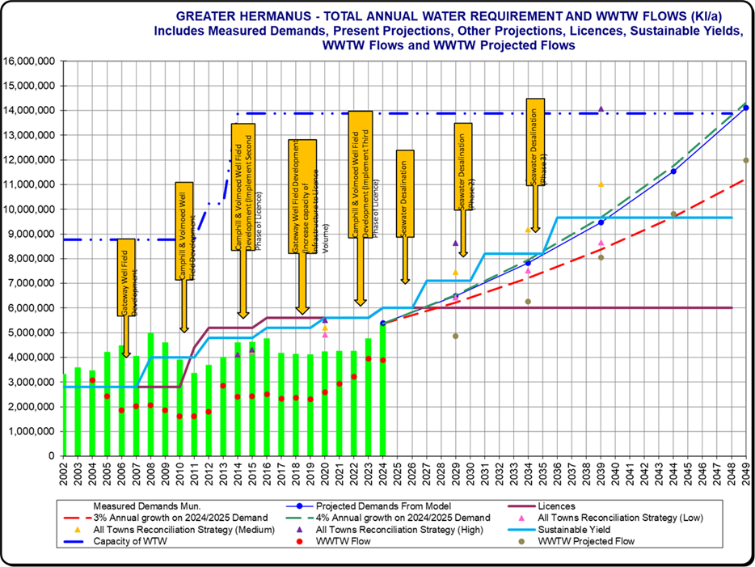
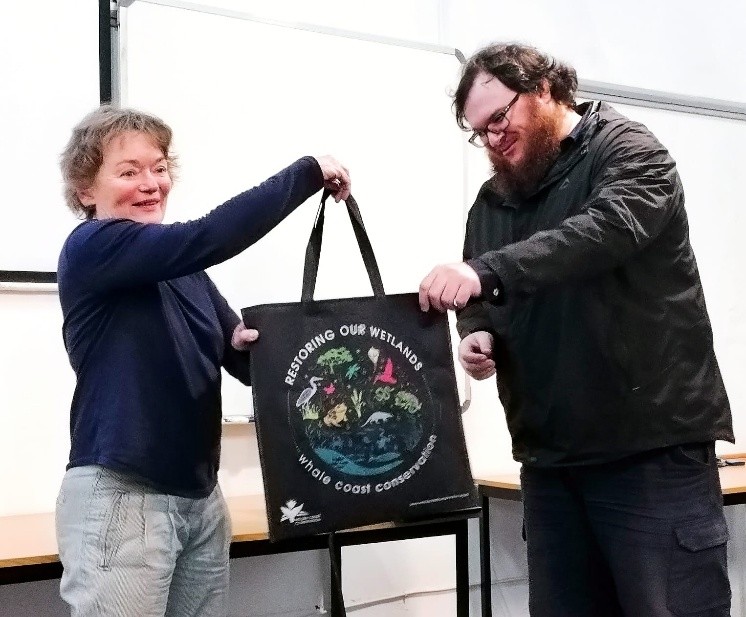
Mill Stream cleanup with Die Bron
We thank everyone who came out to help with WCC’s cleanup effort at Stanford’s Millstream. Die Bron Primary learners showed enthusiasm and dedication while cleaning around the Millstream. We thank the AVI Community Trust and Marine Coastal Conservation for their support.
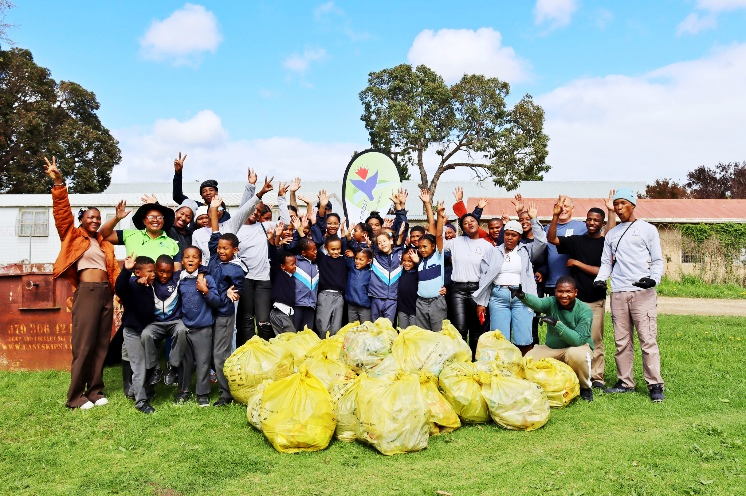
Spring Day in the Paddavlei
Spring Day was celebrated in the beautiful Paddavlei wetland with Gr 2 learners from Hawston Primary. The enthusiastic youngsters planted 28 milkwood trees to extend the existing milkwood forest.
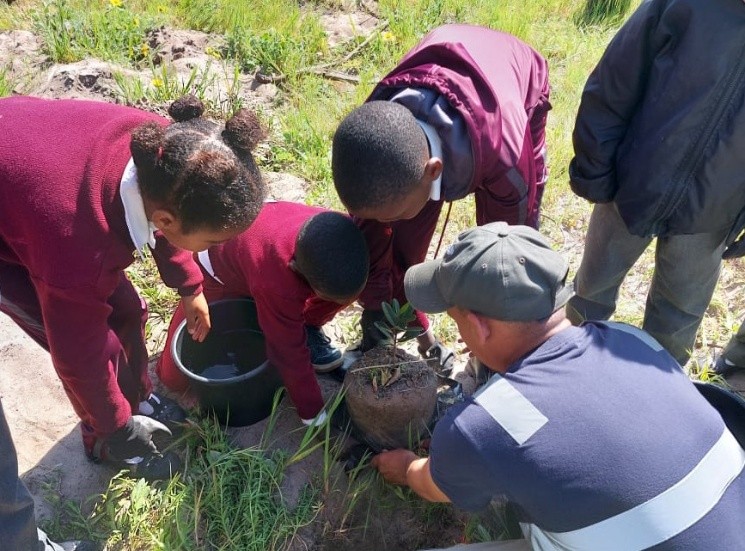
Schools visit the HBS Flower Festival
Many school groups were invited to the HBS Flower Festival. A group of 20 from Gansbaai Primêr came on the first morning, but the festival was kept open for an extra morning to accommodate more schools.
The learners were divided into smaller groups that marvelled at all the fynbos specimens in the hall, especially the different seeds which they could study under a microscope. They also learned about different seed dispersal adaptations, including the case of the restio and the dung beetle. Much fun was had by following a map of the Fernkloof gardens to visit places of interest.
Educators also took them for a walk in the nature reserve, pointing out some of the more prominent fynbos species.
WCC’s Youth Environment Programme remains one of our top priorities.

We thank our sponsors


